Kamchatka earthquake highlights the advances in tsunami early warning systems
The response to the 8.8 magnitude earthquake in Russia has emphasised how far scientific understanding of tsunamis has come over the last two decades, and the improved mitigation measures that are now in place.
31/07/2025 By BGS Press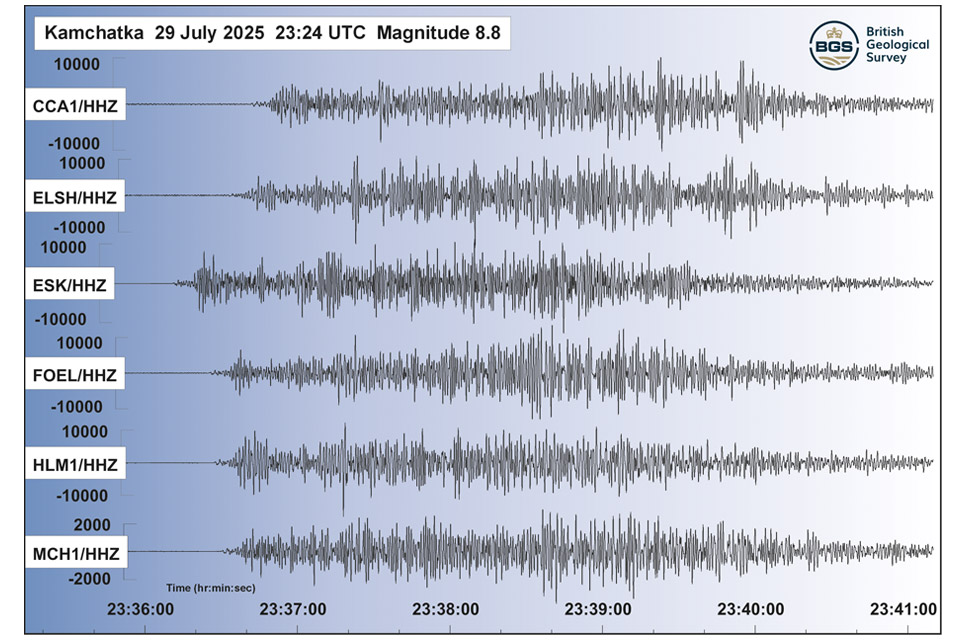
On 29 July 2025, global monitoring systems detected a large earthquake offshore of the Kamchatka Peninsula, Russia, and widespread tsunami warnings were issued across the Pacific region. With a magnitude of 8.8, it was all too easy to think back to the 9.0 to 9.1 magnitude event that devastated Japan in 2011, or the 9.2 to 9.3 magnitude event on Boxing Day in 2004. Thankfully, on this occasion, the impact is believed to be relatively small by comparison.
However, the Kamchatka event did reveal impact of a different nature. Almost as soon as news broke of the earthquake, tsunami warnings were issued and millions of people were told to evacuate across locations at risk, 2 million in Japan alone. This was the result of two decades of research on hazard mitigation following the Boxing Day earthquake in 2004, which claimed the lives of more than 220 000 people in one of the largest disasters, in terms of loss of life, in modern history.
Immediately after the Indian Ocean event in 2004, BGS scientists participated in responsive marine research expeditions that resulted in increased knowledge of sea-bed deformation resulting from the earthquake. Longer-term responses resulted in major advances in understanding earthquake tsunami mechanisms, which have further contributed to disaster risk reduction efforts.
Most significant, in terms of public safety, has been the installation of improved tsunami warnings for coastal communities. Tsunami early warning systems (TEWS) are based on identifying earthquake magnitudes (usually larger than magnitude 7 to 8) that could result in hazardous tsunamis. The Indian Ocean tsunami took two hours to reach the coasts of India, Sri Lanka and Thailand, where around 80 000 people lost their lives. Many of them could potentially have been saved if there had been an operational TEWS in place.
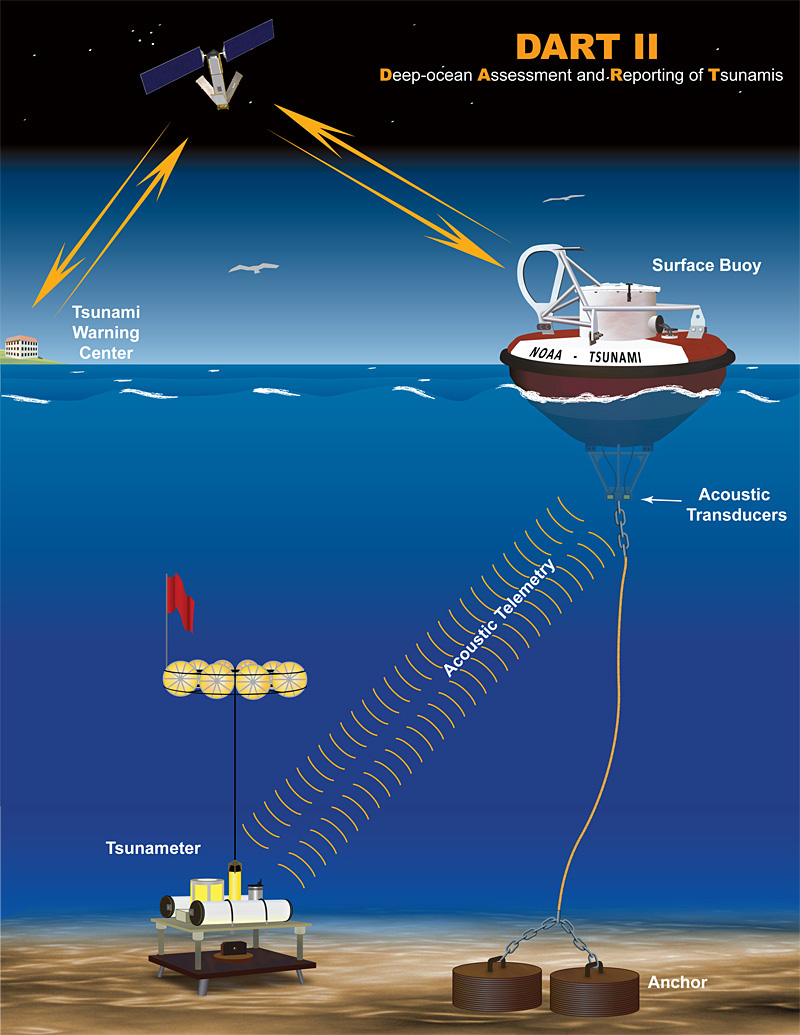
How tsunami wave information in the deep ocean is transmitted to tsunami warning centers. Source: NOAA
In the wake of the catastrophic 2011 Great East Japan Earthquake and Tsunami, further advancements were made in our understanding of tsunami mechanisms, which ultimately led to improved mitigation measures around the world.
Our knowledge base today to plan for and respond to tsunamis is far beyond anything considered possible before the turn of the century.
Following the devastating events of 2004, research has allowed us to be more prepared than ever before to mitigate the threat of this formidable phenomenon. This was highlighted during the Kamchatka earthquake and subsequent tsunamis. TEWS were activated, which led to the evacuation of millions to safety and has ultimately led to a relatively minimal impact being reported.
Prof David Tappin, BGS marine geologist and leading tsunami expert.
Whilst warning systems for earthquake tsunamis are now effectively implemented for major events, there is still the major challenge of designing warning systems for other tsunami mechanisms, such as landslides and volcanic eruptions. Hopefully, with new approaches potentially available through applications such as artificial intelligence, these will become a reality.
Relative topics
Related news
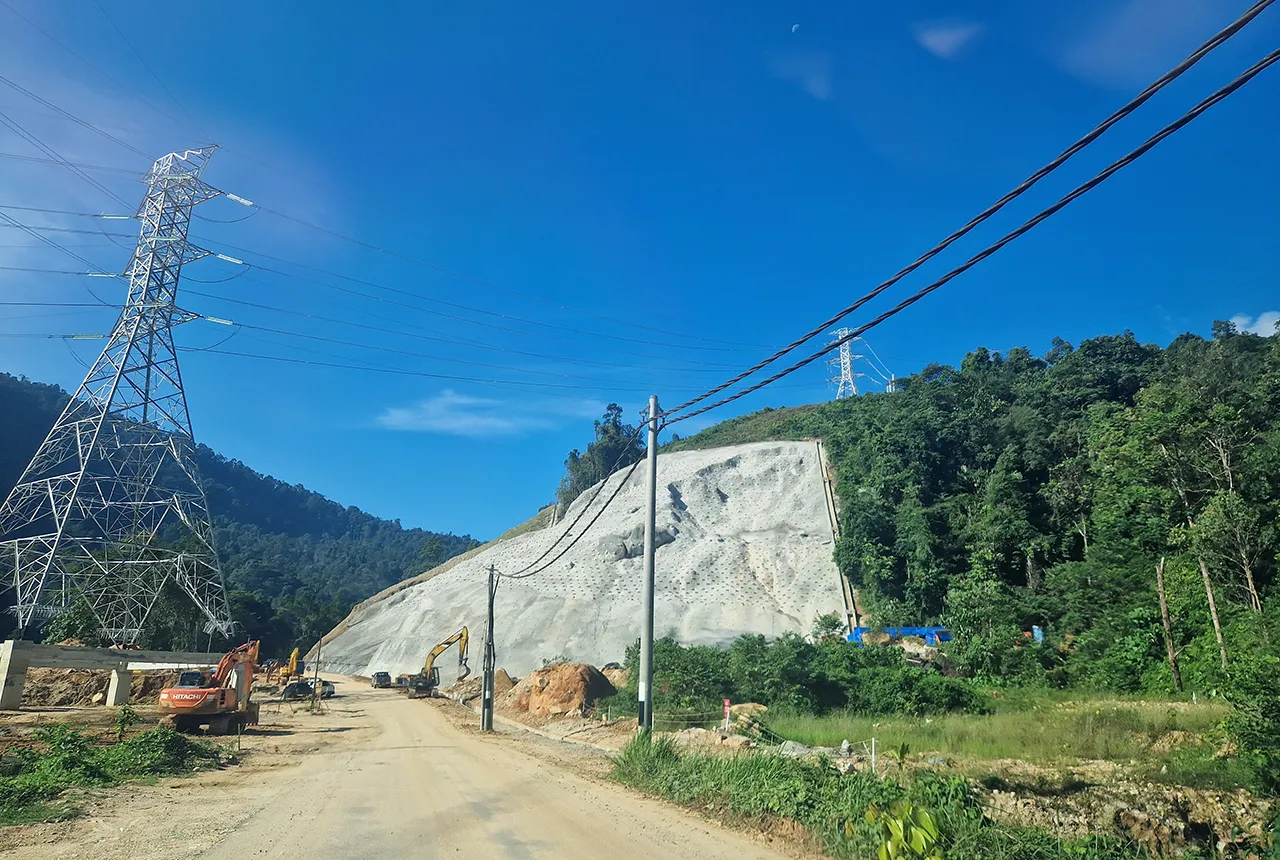
BGS awarded funding to support Malaysia’s climate resilience plan
17/12/2025
The project, funded by the Foreign, Commonwealth & Development Office, will focus on minimising economic and social impacts from rainfall-induced landslides.
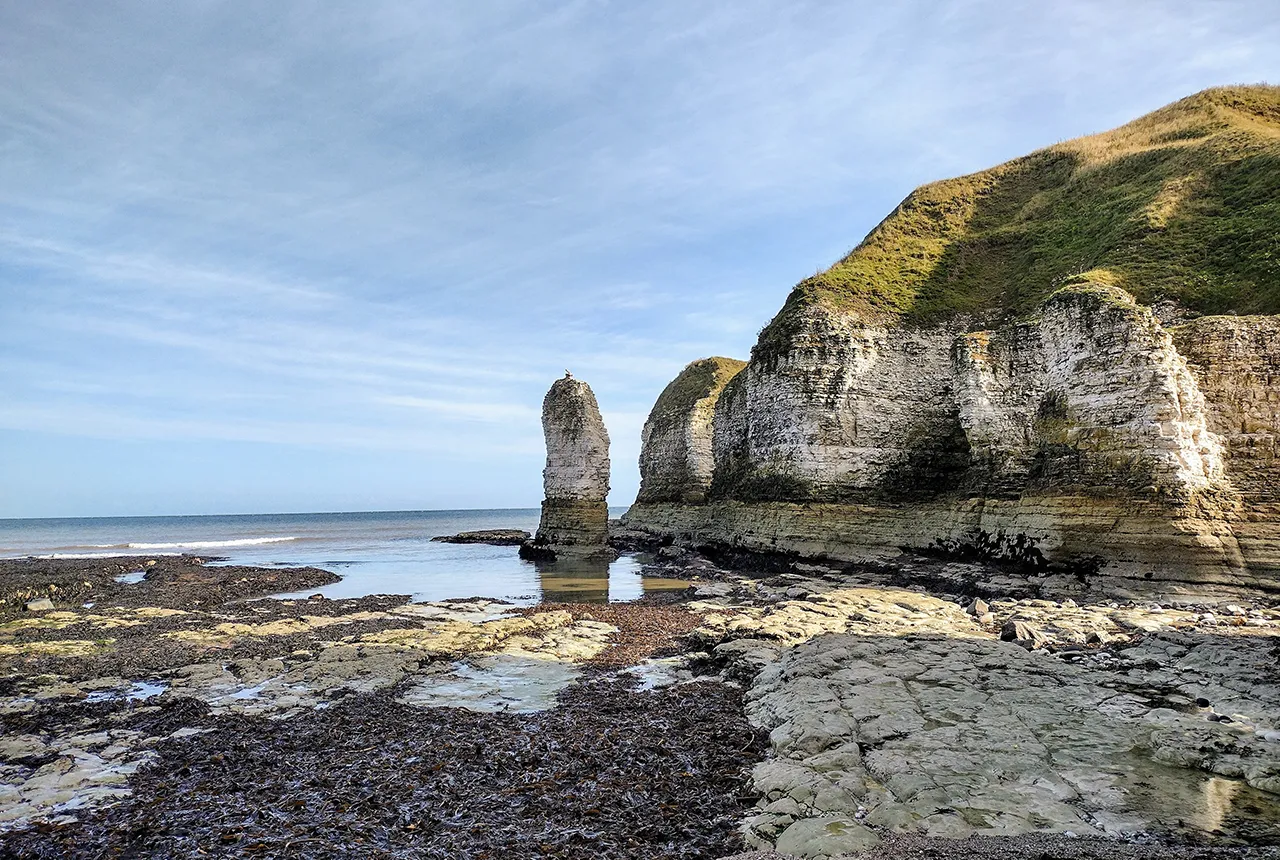
New geological maps of the Yorkshire Wolds to better inform groundwater management and policy decisions
17/12/2025
The new mapping provides crucial data on localised geological issues that may assist in protecting water supplies.
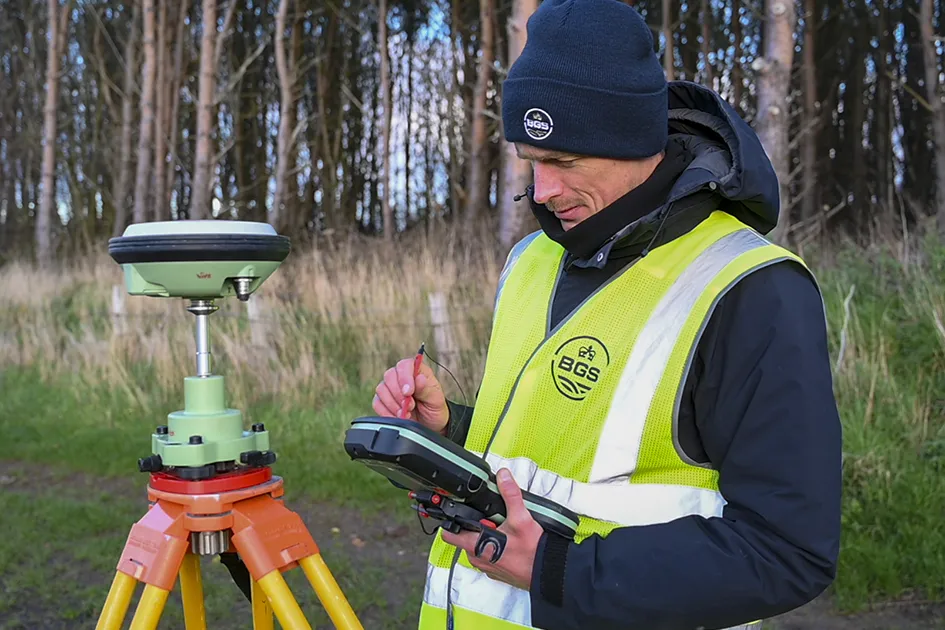
‘Three norths’ set to leave England and not return for hundreds of years
12/12/2025
The historic alignment of true, magnetic, and grid north is set to leave England, three years after they combined in the country for the first time since records began.

BGS agrees to establish collaboration framework with Ukrainian government
11/12/2025
The partnership will focus on joint research and data exchange opportunities with Ukrainian colleagues.

Making research matter: BGS joins leading research organisations in new national initiative
10/12/2025
A new alliance of 35 organisations has been formed that is dedicated to advancing science for the benefit of people, communities, the economy and national priorities.

New 3D model to help mitigate groundwater flooding
08/12/2025
BGS has released a 3D geological model of Gateshead to enhance understanding of groundwater and improve the response to flooding.

Scientists gain access to ‘once in a lifetime’ core from Great Glen Fault
01/12/2025
The geological core provides a cross-section through the UK’s largest fault zone, offering a rare insight into the formation of the Scottish Highlands.
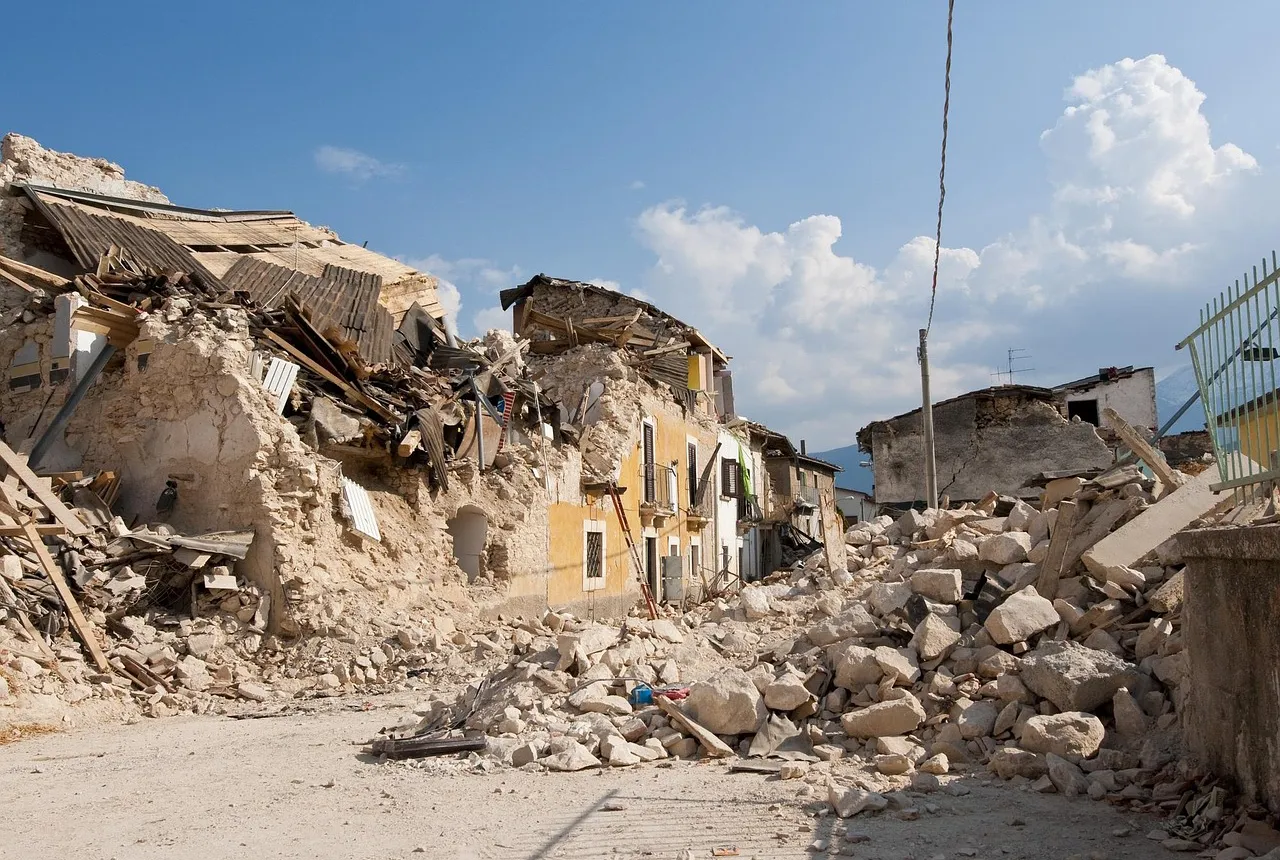
New research shows artificial intelligence earthquake tools forecast aftershock risk in seconds
25/11/2025
Researchers from BGS and the universities of Edinburgh and Padua created the forecasting tools, which were trained on real earthquakes around the world.

BGS welcomes publication of the UK Critical Minerals Strategy
23/11/2025
A clear strategic vision for the UK is crucial to secure the country’s long-term critical mineral supply chains and drive forward the Government’s economic growth agenda.

New funding awarded for UK geological storage research
21/11/2025
A project that aims to investigate the UK’s subsurface resource to support net zero has been awarded funding and is due to begin its research.

UK braced for what could be the largest solar storm in over two decades
12/11/2025
Intense geomagnetic activity could disrupt technology such as communication systems, global positioning systems and satellite orbits.
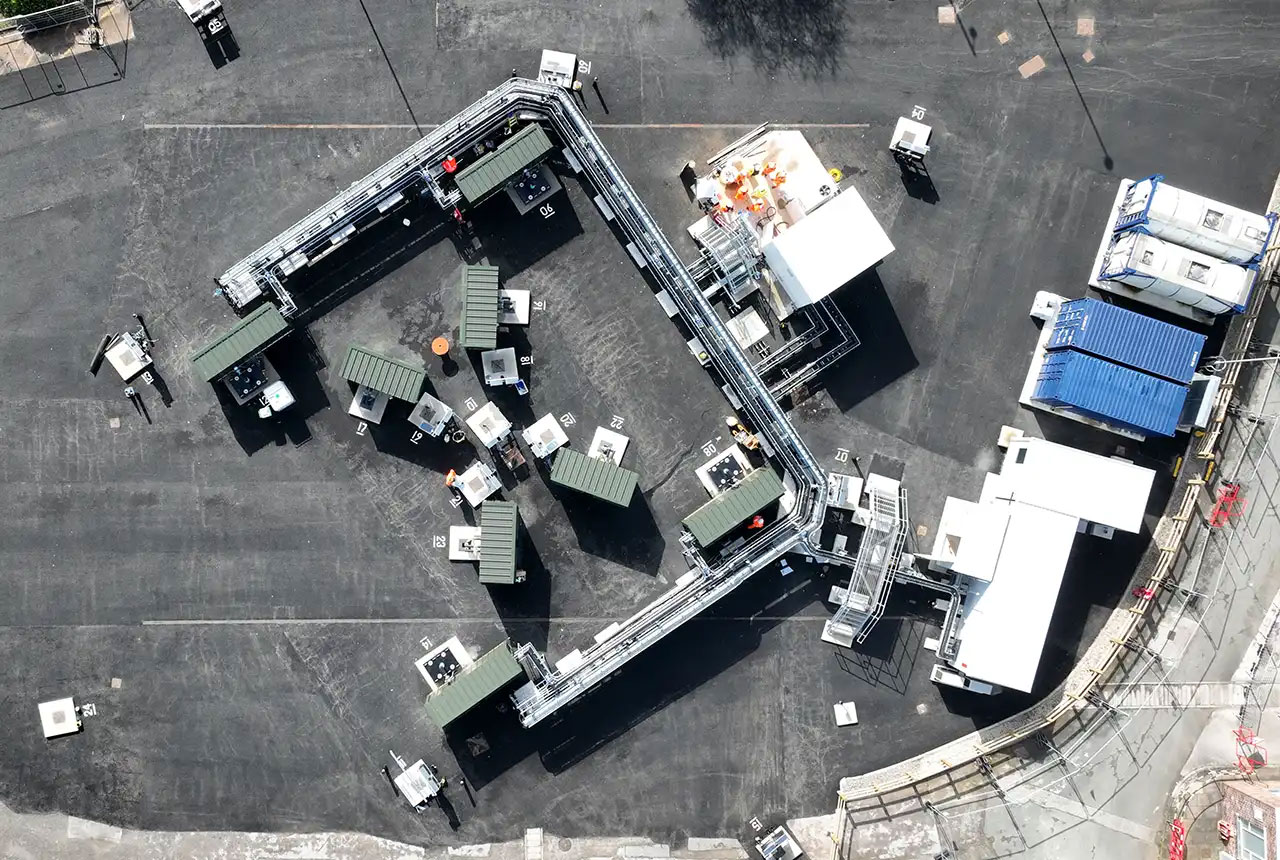
First distributed acoustic sensing survey completed at UK Geoenergy Observatory
12/11/2025
New research at the Cheshire Observatory has shown the potential for mapping thermal changes in the subsurface using sound waves.




